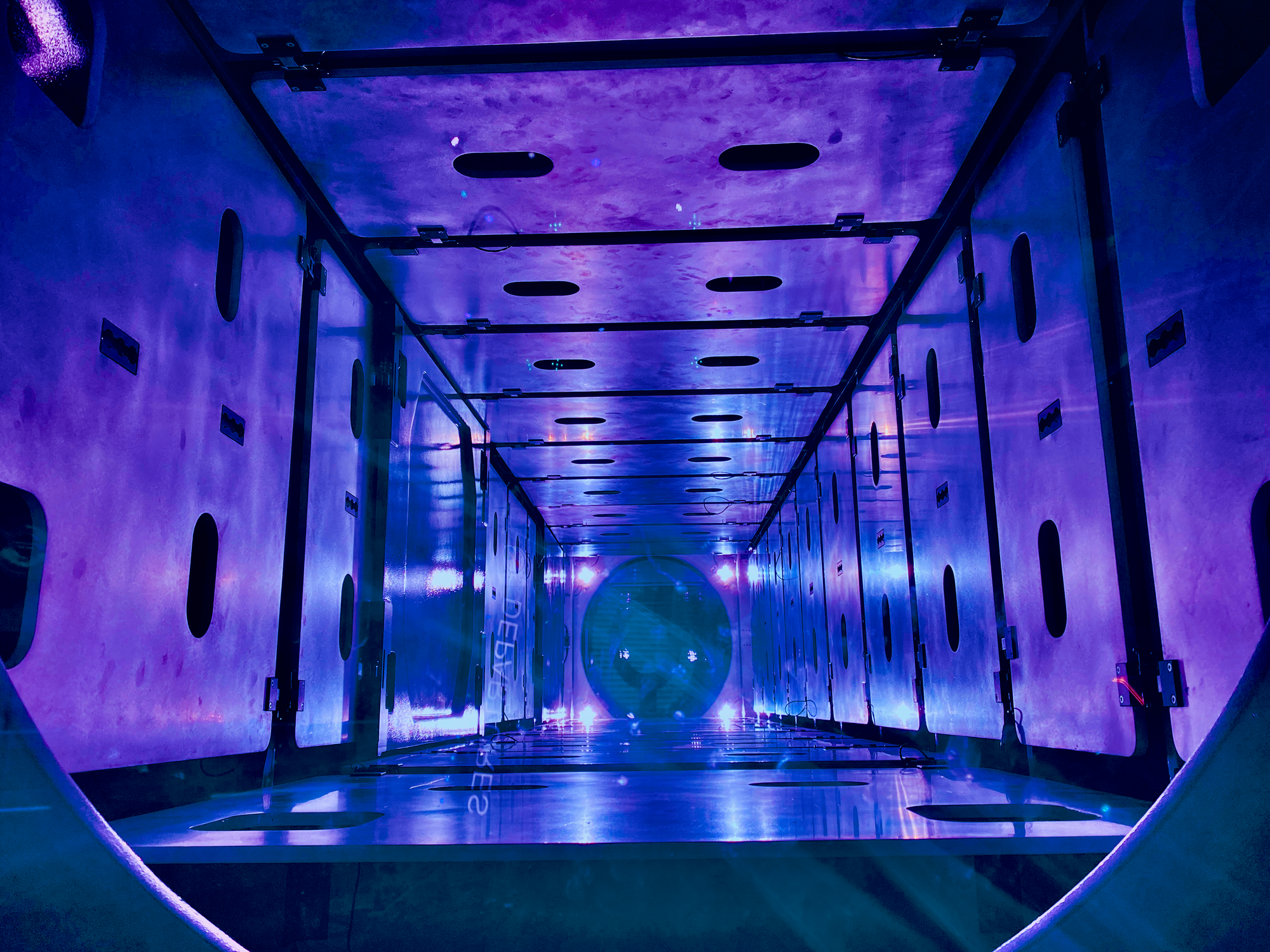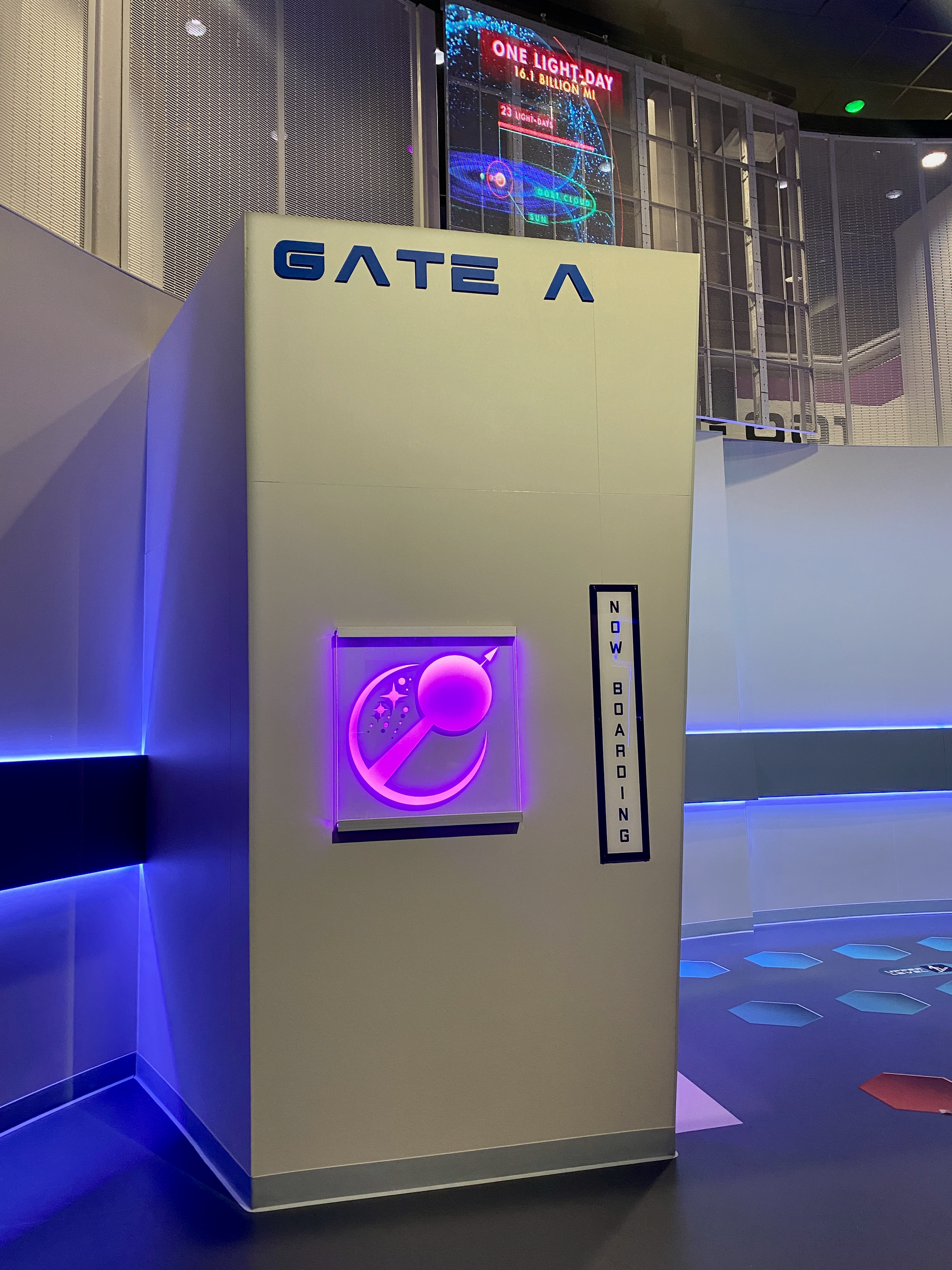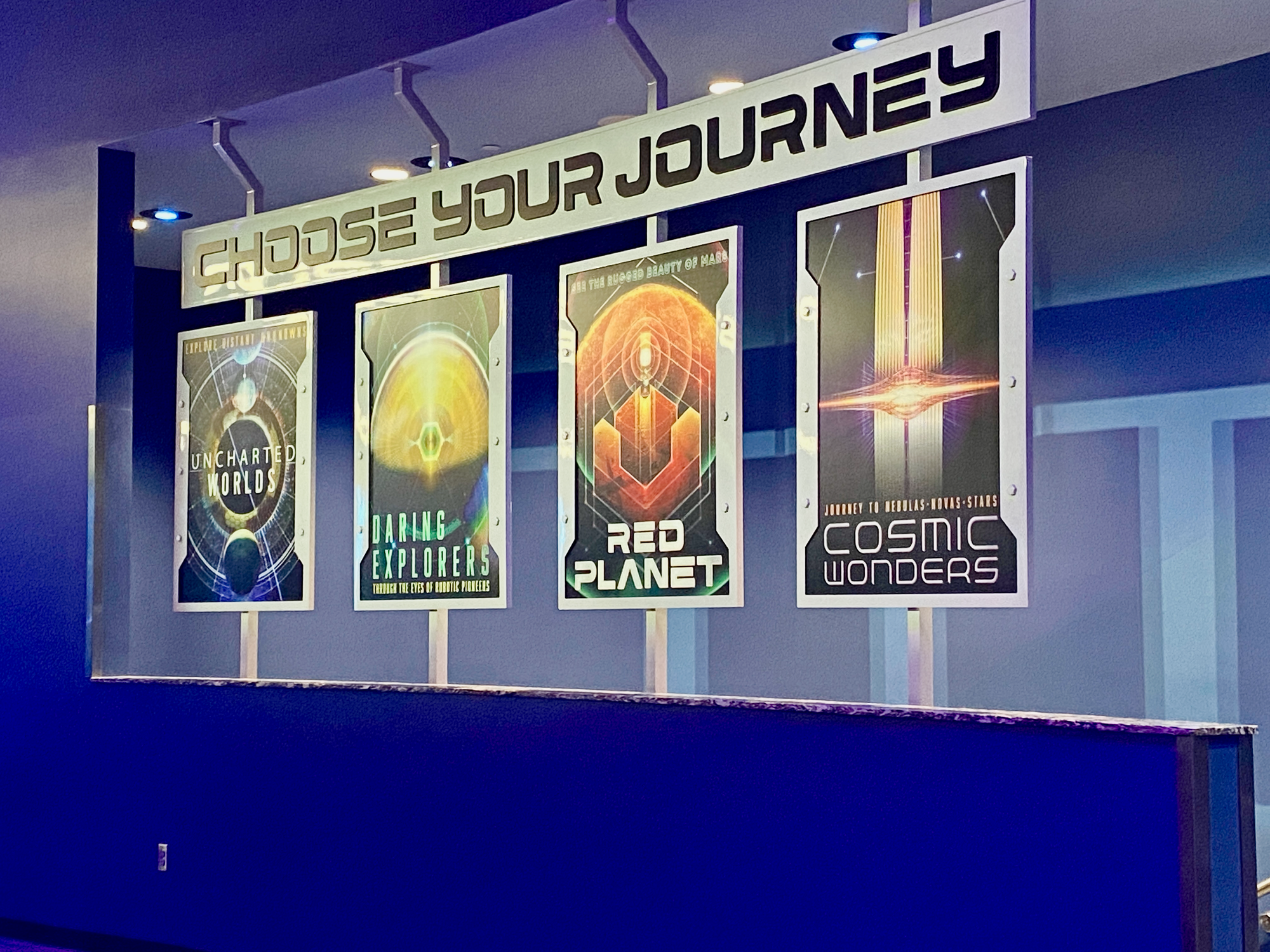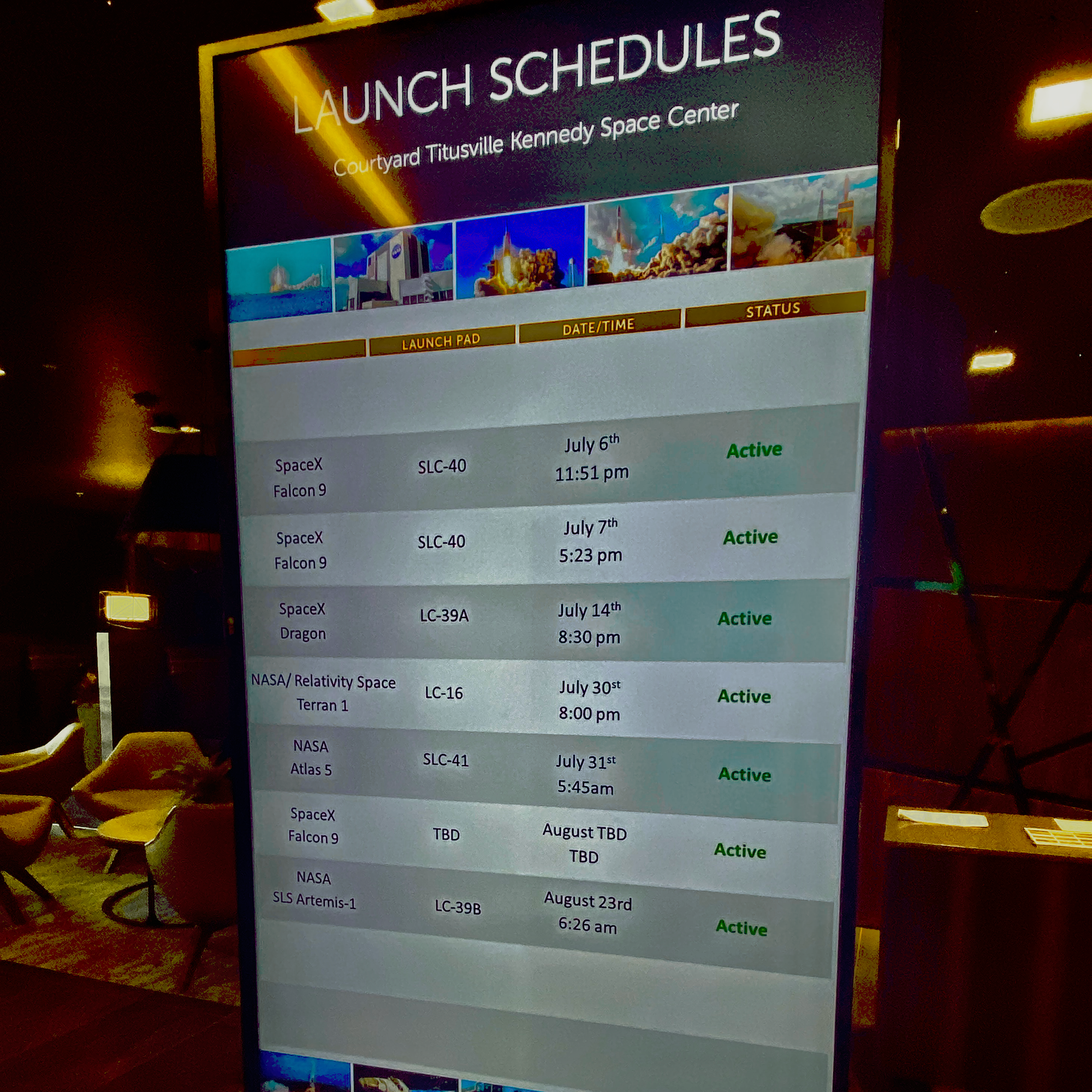Popularizing Space Travel
“Spaceport KSC” is the first time in my life that I’ve ever witnessed a fully-built spaceport for civilian spaceflight. It truly sets the stage to start imagining answers to basic travel questions.

I learned about NASA’s Gateway Program when I lived near the Johnson Space Center in Houston, Texas, in 2017. I used to drive by it almost daily on my way to work at Ad Astra Rocket Company, an R&D spaceflight company dedicated to advancing in-space electric plasma propulsion. The NASA Gateway program integrates numerous commercial and international partners such as the European Space Agency, Canadian Space Agency, and Japan Aerospace Exploration Agency. The program aims to build a small space station orbiting the Moon to meet long-term human space exploration needs, support the Artemis missions, and support industry commercialization.
This year, living in Florida, I thought I’d visit the new exhibit “Gateway: The Deep Space Launch Complex” at NASA’s Kennedy Space Center Visitor Complex in Merritt Island, Florida. It’s a brand new exhibit unveiled this past May. I live about 15 mins away, so I wanted to report on it and give you my thoughts and impressions.
The Gateway exhibit focuses on the industry’s commercialization with displays from the industry heavyweights such as SpaceX, Lockheed Martin, Sierra Nevada Corporation, Blue Origin, Aerojet Rocketdyne, and United Launch Alliance. I saw various mockups of space habitats, flight capsules, multi-use logistics modules, and interactive flight simulations. It was, of course, exhilarating to have the chance to fill in the gaps of space knowledge, history, and trivia while getting up close to the proposed equipment. I also closely examined post-flight hardware from SpaceX, including the historic Falcon 9 first stage rocket booster B1021 and Crew Dragon COTS-2 Capsule, which are both on display. B1021 is the first reusable booster to be reflown and the first to land on the autonomous spaceport drone ship named “Of Course I Still Love You.” COTS-2 was the second spaceflight test of the uncrewed Crew Dragon capsule, the first commercial spacecraft to dock at the International Space Station. It’s incredibly visceral to closely observe the effects of orbital re-entry.
As I’ve worked only from the industry side with NASA, I sensed that the exhibit brought a much-needed homage to the many commercial partners that have made NASA’s groundbreaking missions successful over the decades. Unfortunately, I believe the broader public, including the media, sometimes forgets this joint history. In contrast, public-private partnerships have always been essential for NASA and many space agencies and efforts worldwide. For example, if you look at the history of the Space Shuttle aircraft program, which operated from 1981 to 2011, all the program’s reusable orbiters were built by a California-based company.
I found the most interesting section in the new exhibit to be “Spaceport KSC” because it provides a realistic window to a future where spaceflight beyond Earth’s orbit is common. The standards of today’s airports inspire the design. I waited in a lounge before boarding gates for different flight simulations.
In the lounge, you’ll find screens showing the distance, light-years, and data points of your chosen flight. You can choose to travel in a simulator to different parts of the Universe. Four journeys are offered:

- Red Planet
- Uncharted Worlds (to the Trappist-1 exoplanet system)
- Cosmic Wonders (including several nebulae)
- Daring explorers (to Jupiter, Saturn, Titan, and Europa).

Each flight simulator lasts between five to ten minutes. As expected from the summer’s new attraction, the wait times were long. Cameras were not permitted inside during the simulation, but you’ll get the impression with some of my footage.
I was amazed at the level of commitment in the smallest of details to create a forward-looking interactive experience aiming to normalize space travel. For example, there are greetings and reminders broadcast over the speakers by a professional voice actor, which emulate the sense of calm welcome and assistance that is typically broadcasted in all airports. These reminders range from the estimated arrival time to Mars to flight delays of inbound spacecraft from Saturn
The area has no windows, so you’re fully immersed in the experience while waiting to enter the flight simulator. Numerous screens strategically placed in the waiting lounge continuously play videos showing the Spaceport’s fictional exterior design.
“Spaceport KSC” is the first time in my life that I’ve ever witnessed a fully-built spaceport for civilian spaceflight. It truly sets the stage to start imagining answers to fundamental questions such as: Will travel documentation exist? Will there be a unique mechanism/equipment/medication to adjust to the shifts in gravity and radiation? What apparel will be suitable inside the spacecraft? Of course, these questions are just the beginning. If you haven’t heard, startups and researchers are already exploring 3D-printed fashion and apparel built with novel biomaterials, including graphene and blue algae. Vollebak’s Mars Jackets, for example, come “with an anti-gravity pocket for shifting gravity fields, a ballistic nylon outer shell, and 3D printed vomit pocket with screw cap opening.”
Not surprisingly, launches are increasing monthly at the Kennedy Space Center, Cape Canaveral Air Force Station, and worldwide. Even living close by, it’s actually hard to keep up, so I see the tremendous value in creating the new Gateway’s exhibit, “Spaceport KSC.” This type of edutainment exhibit, which mixes education and entertainment, will become increasingly vital so that the broader conversations about becoming multiplanetary can become mainstream and normalized.


